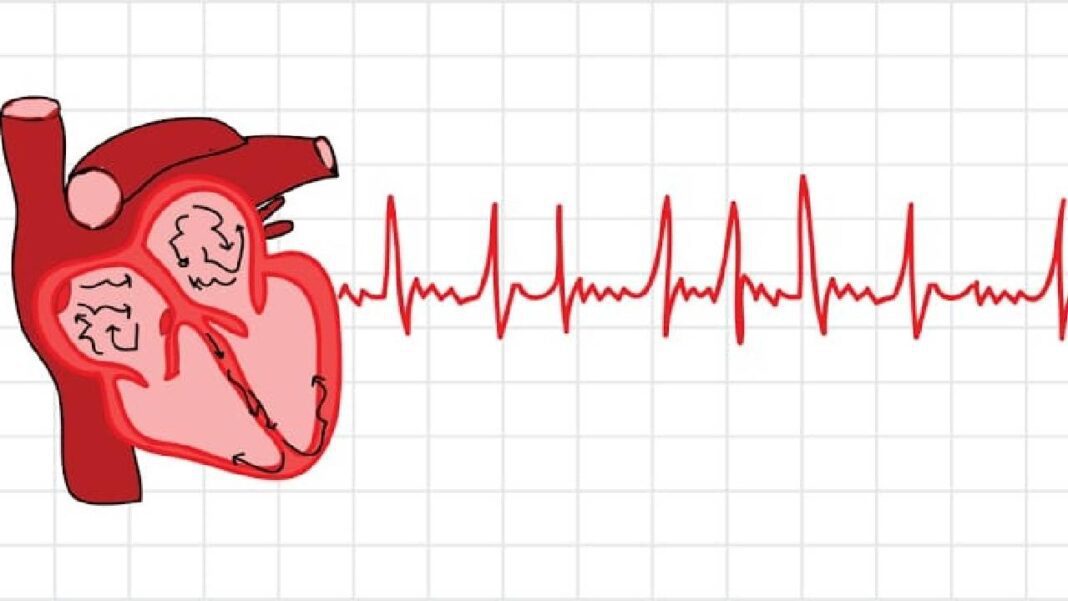Atrial fibrillation (AFib) is a common cardiac arrhythmia that affects millions of individuals globally. It’s a condition characterised by irregular and often rapid heartbeats, which can lead to various complications, including stroke. Understanding AFib, its detection, treatment, and stroke prevention strategies is crucial for effectively managing this condition and enhancing the quality of life for those affected. Dr. Aman Salwan, consultant and interventional cardiacologist at CARE Hospitals, Nampally, Hyderabad, shared with The Pioneer in detail about atrial fibrillation, navigating detection, treatment, and stroke prevention.
Atrial fibrillation is a heart rhythm disorder that originates in the atria, the upper chambers of the heart. In a normal heartbeat, the heart’s electrical signals travel in a coordinated and organised manner, allowing for a rhythmic contraction and the pumping of blood throughout the body. However, in individuals with AFib, these electrical signals become chaotic, resulting in an irregular and often rapid heartbeat. This irregular heartbeat can lead to inefficient pumping of blood, causing symptoms such as palpitations, shortness of breath, fatigue, dizziness, and chest discomfort. If left untreated, AFib can significantly increase the risk of stroke, heart failure, and other cardiovascular complications.
Detecting atrial fibrillation
Early detection of atrial fibrillation is crucial for effective management and the prevention of complications. However, AFib can be challenging to detect as it may not always present noticeable symptoms. Regular check-ups and screenings, especially for individuals at higher risk, can aid in early diagnosis. An electrocardiogram (ECG or EKG) is the primary tool for diagnosing AFib. It records the heart’s electrical activity, identifying any irregularities in the heart rhythm. Holter monitors, event monitors, and mobile health applications can also be used for longer-term monitoring, enabling the detection of intermittent or paroxysmal AFib.
Treating atrial fibrillation: The treatment of atrial fibrillation aims to manage symptoms, restore normal heart rhythm, and reduce the risk of complications. Treatment plans are personalised based on the patient’s symptoms, overall health, and the presence of underlying conditions.
Medications: Medications are often the first line of treatment for AFib. Antiarrhythmic drugs help regulate the heart’s rhythm and rate. Anticoagulants, also known as blood thinners, are prescribed to reduce the risk of blood clots and stroke, a significant concern for those with AFib.
Cardioversion: Cardioversion involves using electric shocks or medications to restore a normal heart rhythm. It’s particularly effective for recent-onset AFib or when medications fail to control the irregular rhythm.
Ablation therapy: Ablation involves destroying or isolating the areas of the heart that are triggering abnormal electrical signals. This procedure can be done through catheter ablation and is often recommended for individuals with persistent AFib.
Pacemaker or implantable cardioverter-defibrillator (ICD): In some cases, a pacemaker or ICD may be implanted to help regulate heart rhythms and prevent excessively slow or fast heart rates.
Stroke prevention in atrial fibrillation: Individuals with atrial fibrillation are at a significantly higher risk of stroke due to the potential formation of blood clots in the heart, which can travel to the brain and cause a stroke. Therefore, stroke prevention is a critical component of AFib management.
Anticoagulant therapy: Anticoagulant medications, such as warfarin, dabigatran, rivaroxaban, or apixaban, are commonly prescribed to reduce the risk of stroke by preventing blood clot formation.
Lifestyle modifications: Lifestyle changes, including a heart-healthy diet, regular exercise, limiting alcohol consumption, quitting smoking, and managing stress, can play a crucial role in reducing the risk of stroke and improving overall heart health.
Educating and empowering patients: Education and patient empowerment are vital in managing atrial fibrillation. Patients should be educated about their condition, treatment options, and the importance of adherence to medications and lifestyle modifications. Regular follow-ups with healthcare providers are essential to monitor progress and adjust treatment plans as needed.
Atrial fibrillation is a prevalent cardiac condition that requires comprehensive understanding and appropriate management to mitigate associated risks. Early detection, individualised treatment plans, and effective stroke prevention strategies are essential components of addressing AFib and improving the lives of those affected. With advancements in medical science and a proactive approach to healthcare, individuals with atrial fibrillation can lead fulfilling and active lives while minimising the potential complications of this condition. Regular communication with healthcare professionals and a commitment to a heart-healthy lifestyle are key elements in navigating the journey of atrial fibrillation.




